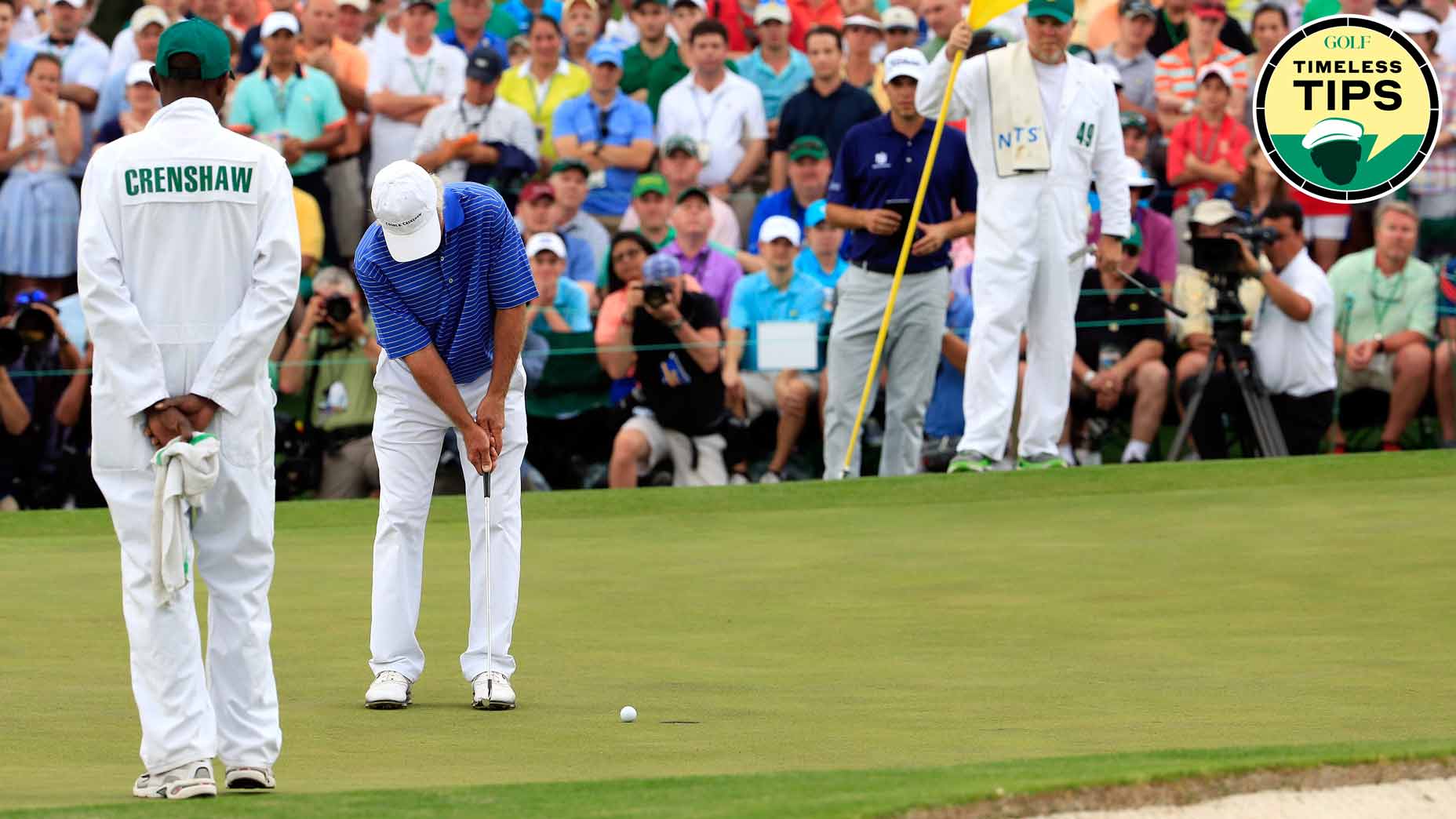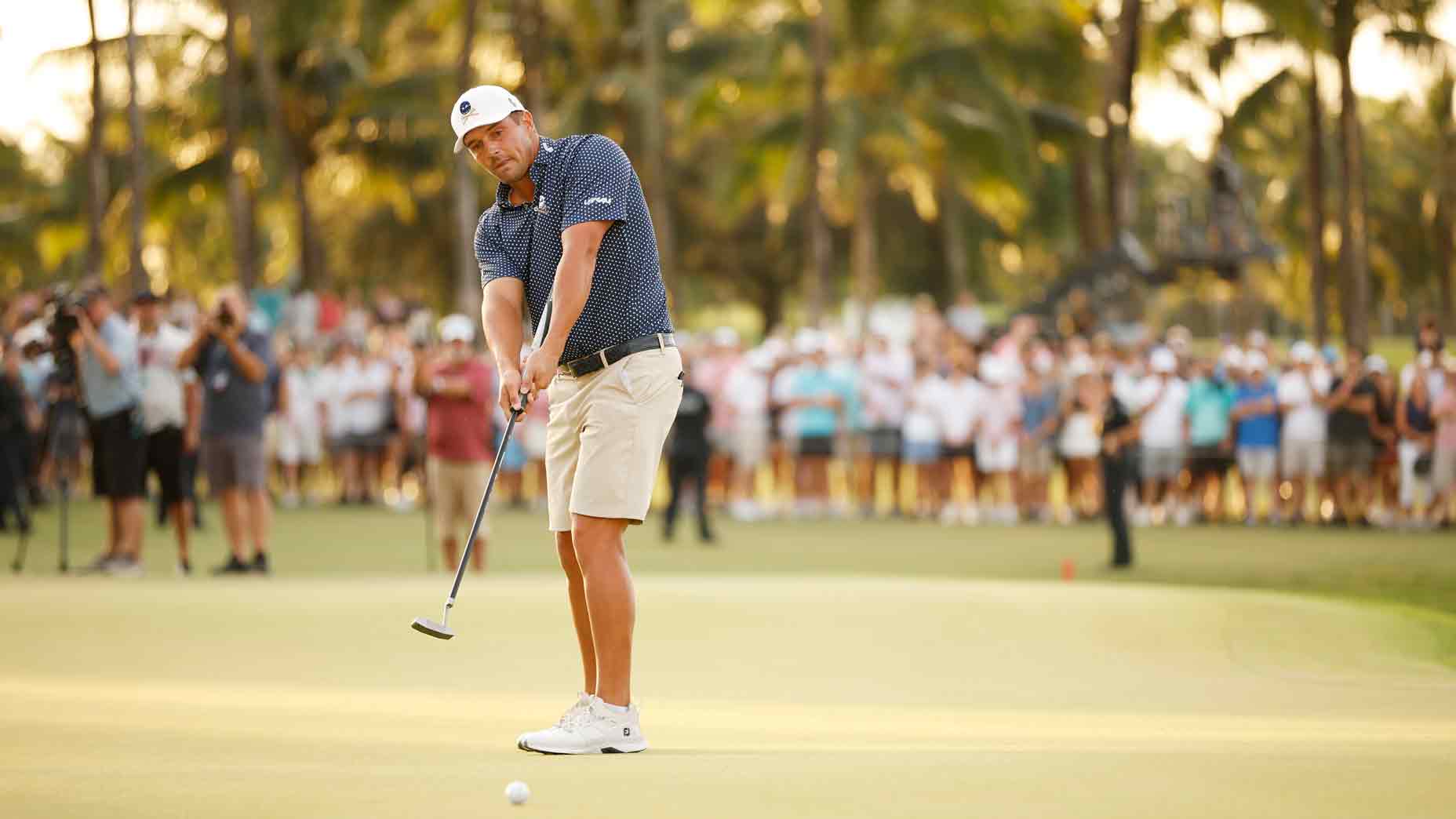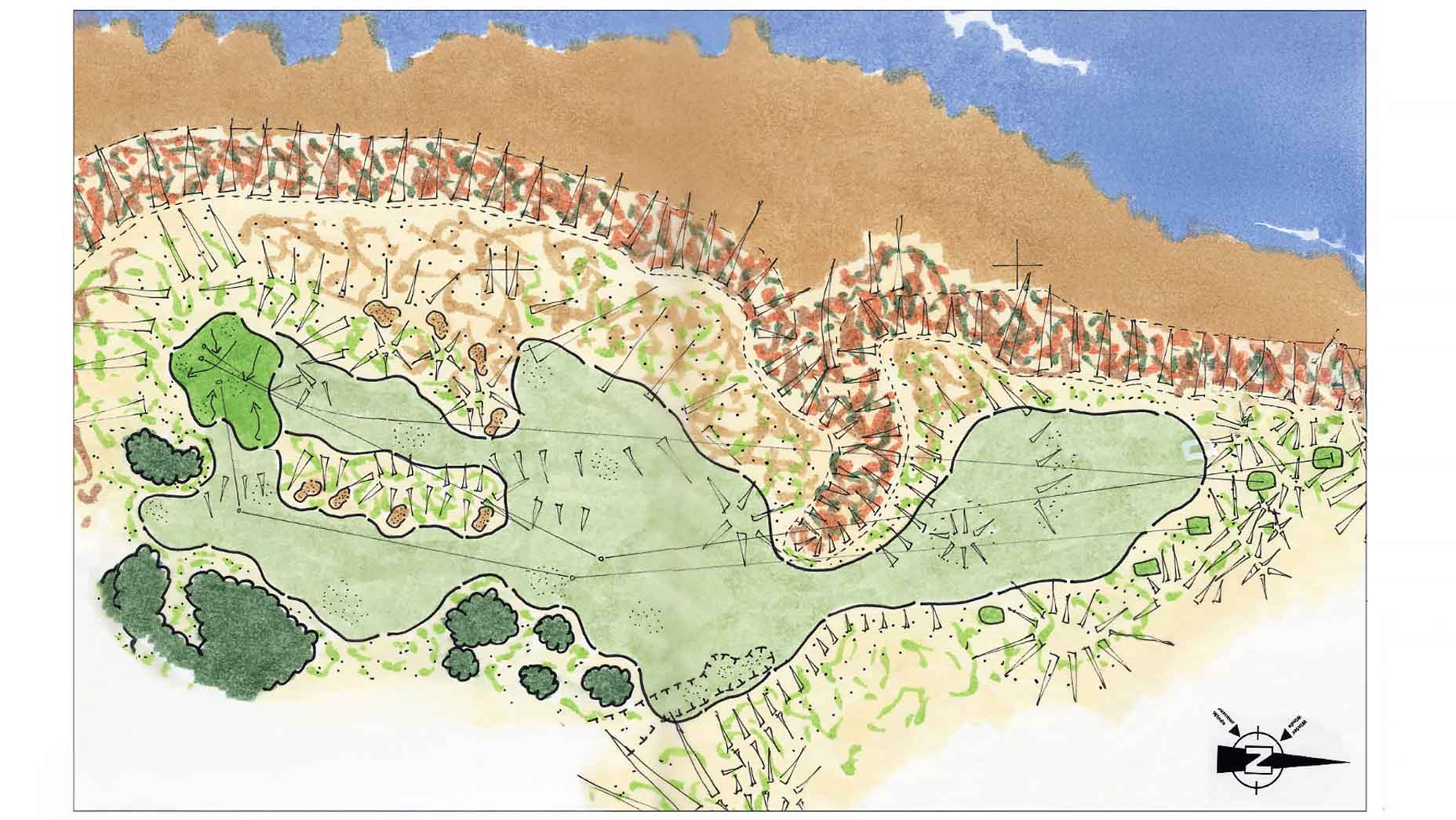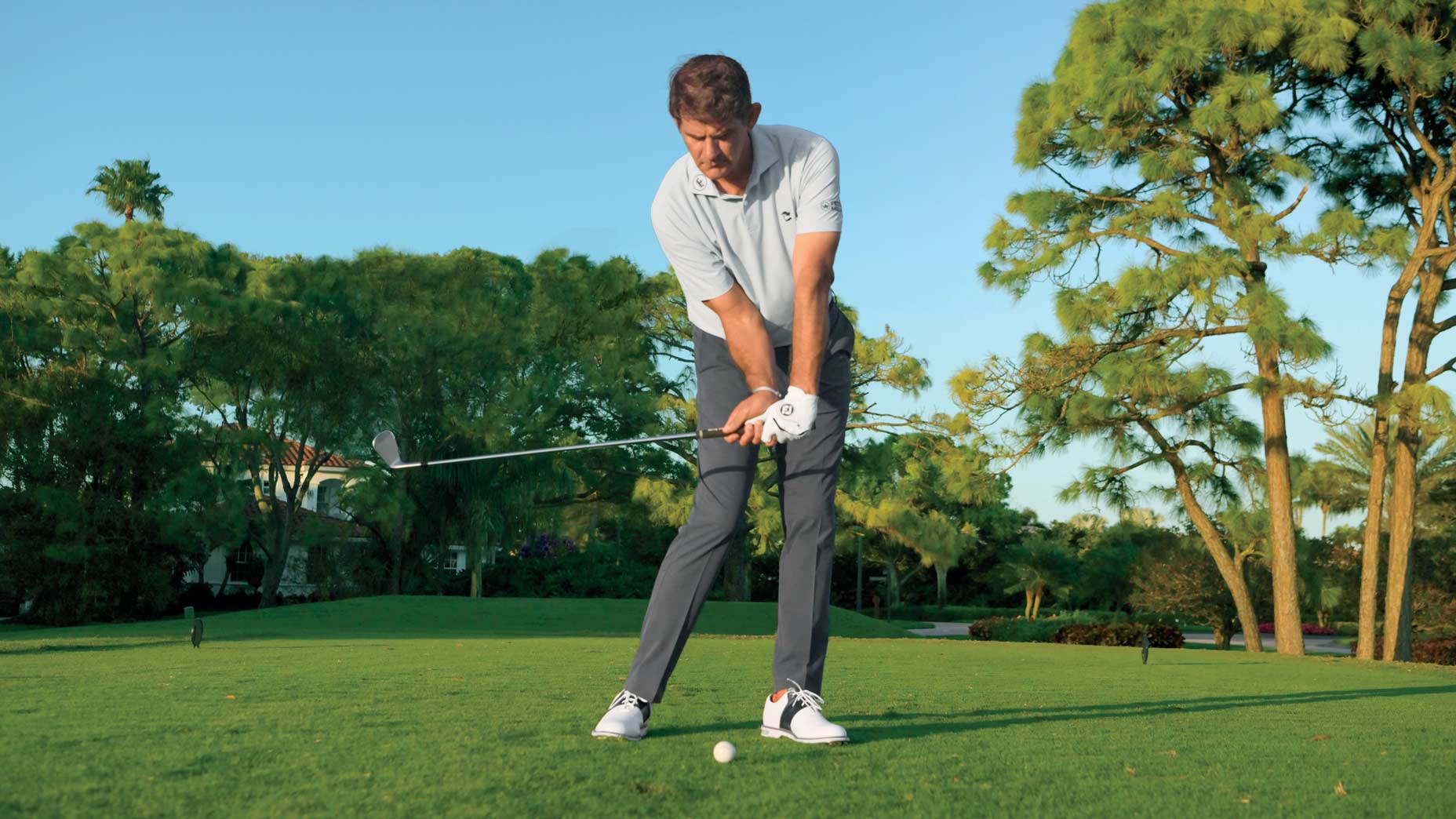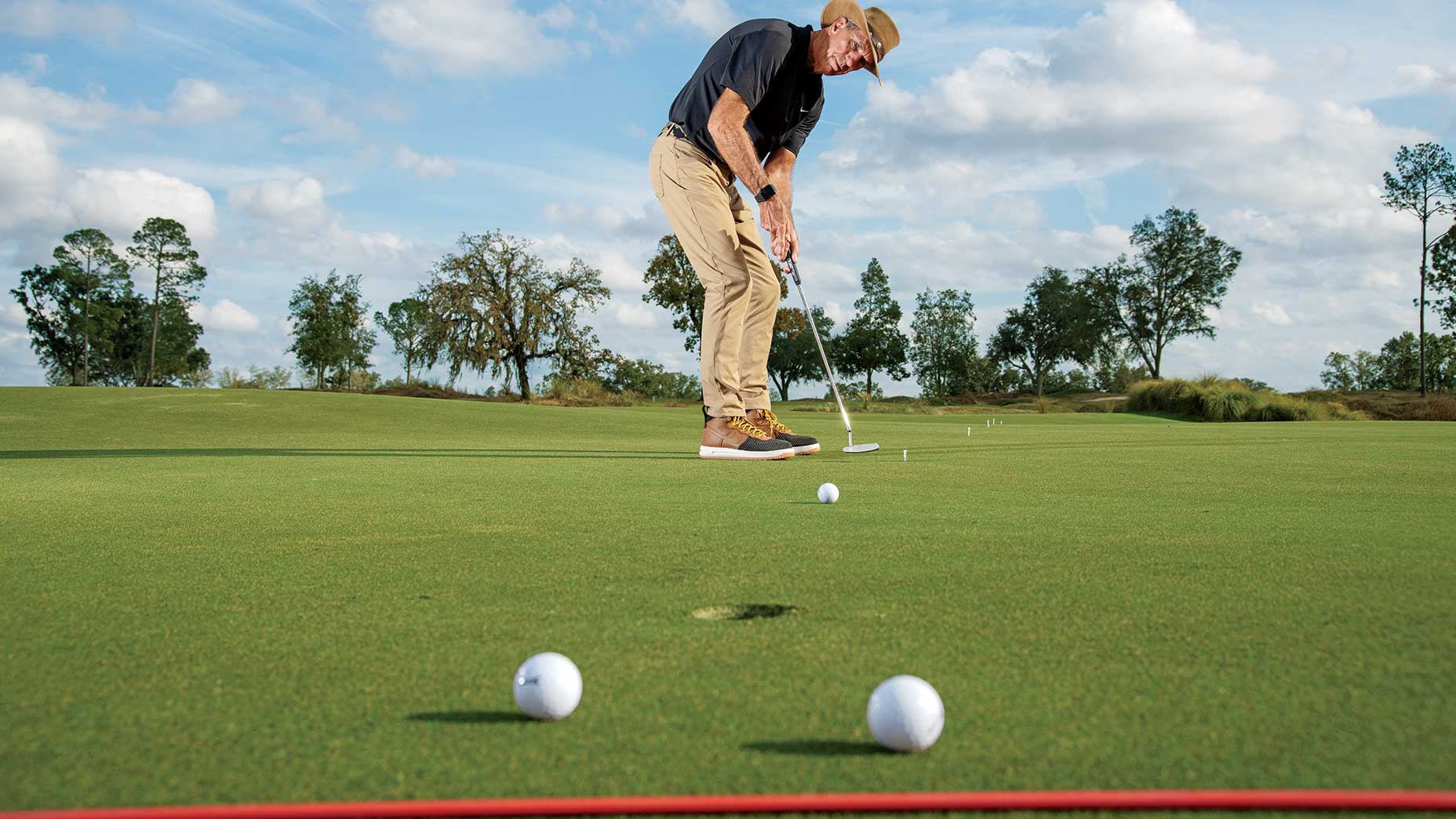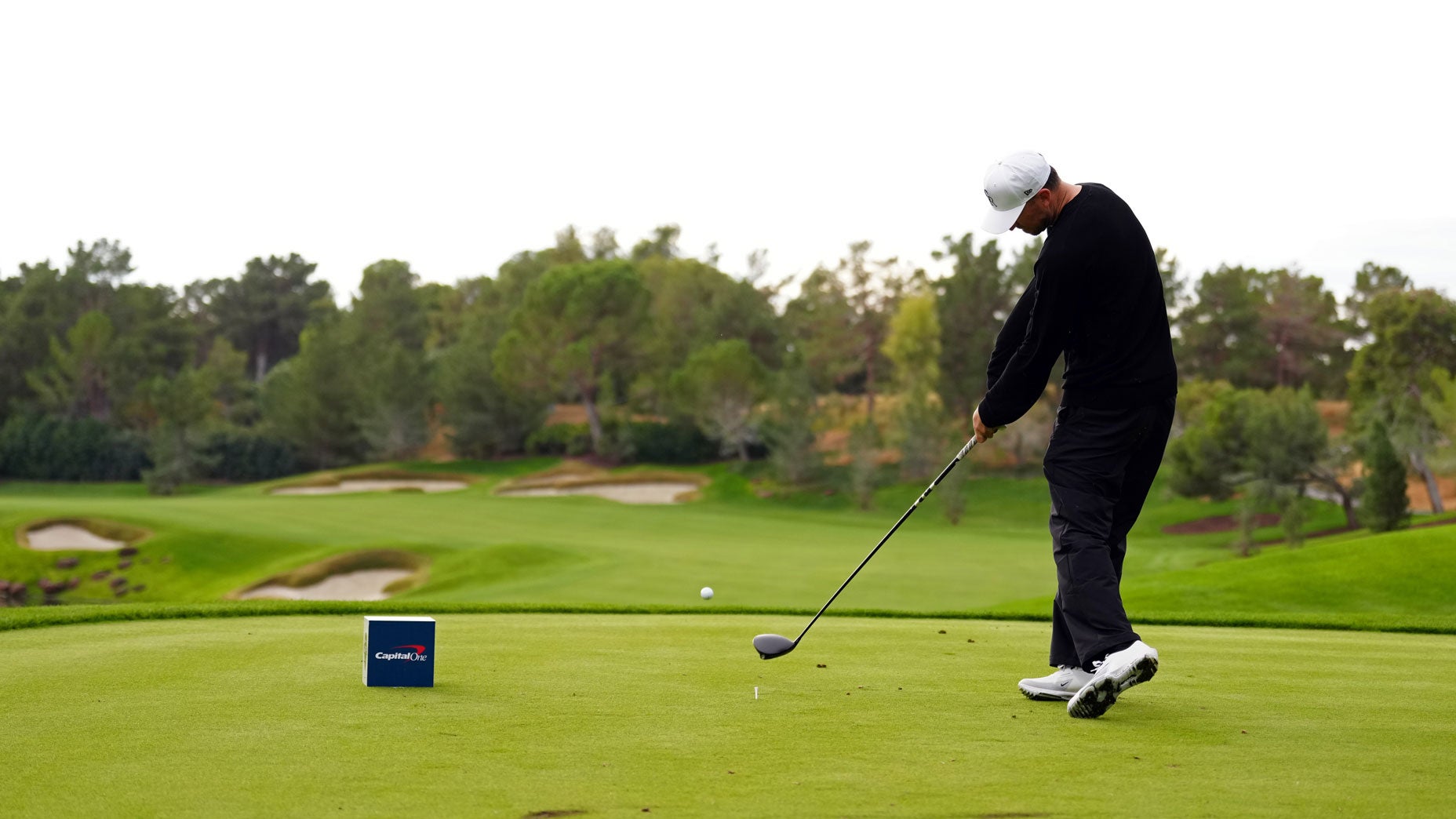Golf instruction is ever-evolving, but the best advice stands the test of time. In GOLF.com’s new series, Timeless Tips, we’re highlighting some of the greatest advice teachers and players have dispensed in the pages of GOLF Magazine. Today we revisit Ben Crenshaw’s putting tips from our January 1981 issue. For unlimited access to the full GOLF Magazine digital archive, join InsideGOLF today; you’ll enjoy $140 of value for only $39.99/year.
Putting is a crucial element of golf — and if you want to become a good player, you’d better learn how to make it a strength. Dead-eye putters can turn bogeys into pars, and pars into birdies. When you’re rolling the ball well on the greens, you’re never truly out of the hole.
Just like in the full swing, everyone has their own unique flare when it comes to putting. Some focus on the mechanics of the stroke, while others rely more on feel. There’s no hard-and-fast rule for what you should do. All that matters is that you feel comfortable over the ball.
Well, that’s mostly true. According to two-time Masters champ Ben Crenshaw, you can use any style you want on the greens — but make sure your style fits within these five “musts.”
5 putting ‘musts’, be Ben Crenshaw
If there’s one certain thing about putting, it’s that it’s an individual business. The great putters have used every conceivable type of grip, stance and stroke. They’ve used shoulder-and-arm strokes, with very little wrist, very wristy strokes, and everything between. They’ve used slow, pendulum strokes and fast, shorter strokes, and again, everything in between.
Are there, then, any rules at all in putting? Yes, I think there are. Although you have great latitude in building your style, you should follow the principles I’ll spell out here.
1. Keep your shoulders over the putt
A lot of instruction in recent years says in effect that in putting your eyes should be over the ball. However, great putters such as Isao Aoki and Fuzzy Zoeller have proved that it’s not a “must” — Aoki’s ball is much farther from his body than a line vertically downward from his eyes. Zoeller putts the same way to a lesser extent, and in checking myself, I’ve found that my eyes are slightly “inside” the ball. What is a “must” is to have the upper part of your back more or less horizontal. This position gives you the swing path you need in putting. Although the putter will still swing to the inside going back and back inside after impact, it will follow a path much closer to “‘straight back and straight through’’ than if you were to stand as erectly as for a full shot. How much you lean over the ball is a personal choice, and varies from players such as Jack Nicklaus and Hubert Green who crouch down, to golfers like myself who stand more erect.
2. Putt like you swing
I think all the great putters have treated the putting stroke as a miniature golf swing. They naturally formed putting strokes that had the same relative length, tempo and style as their full swings. For example. Billy Casper has a closed-to-open type putting stroke; it is fairly short and has a brisk tempo. His full swings have the same characteristics. On the other hand, I have a longer, more deliberate stroke, with the putter face remaining square to the shoulders as I swing back and through. My full swings have the same characteristics. Tom Watson has a very fast tempo in his full swings and the same tempo in his putting stroke. Then there’s Arnold Palmer — he almost forces the ball into the hole on the green and he uses the same method in his full swings. The most notable example, perhaps, was Bobby Locke. He aimed far to the right of target with his full shots and then hooked the ball back from a very closed stance. In putting, he also adopted a closed stance and hit the ball very much from inside to out. Some people swear he even hooked his putts!
To put the thought another way, it’s not a good idea to adopt a putting style that is completely different from your full swings. If you do, it can ‘‘leak’’ into your full swings with poor results. For example, if I were to adopt Billy Casper’s style, | might find myself working the blade from closed to open in my full swings or just plain swinging too “short” and fast. That would be against my natural tendencies. Everyone has a tempo and timing that is theirs naturally. If you deviate from these, the stroke simply won’t work. Equally well, I could be in deep trouble if I decided that I would emulate Locke’s closed alignment. Before I knew it, I could be aiming to the right of target on my full shots and snap hooking myself right off the course!
The bottom line is that you’ve got to know yourself. You should study your own mental and physical makeups and the characteristics of your full swing. Ask yourself: Am I slow and deliberate or quick and nervous? Do I have a long or short swing? Do I favor a square alignment or am I more comfortable slightly open or closed? Do I swing the club from open to closed, closed to open or keep the club square? Based on the answers to these questions, you can develop a method of putting that is compatible with your full swing.
3. Keep your thumbs on top
There is tremendous freedom of choice with regard to the putting grip. You can use the regular overlap, reverse overlap, cross-handed, split-handed and so on. But one attribute is common to nearly every good putting grip—the thumbs lie straight down the top of the grip. Most often this “thumbs on the top” position is used because the player wants to keep the palms facing each other so that the hands work together during the stroke. He finds it helps him keep the clubface square. I do this myself. However, even if you study the good putters who turn the palms outward as Jack Nicklaus does (to reduce wristiness), you will still find that the pads of their thumbs are on the top of the grip. Why? Because with the thumbs on top you have better feel — you can feel the hit and guide the putter more easily.
Bryson DeChambeau says this 1 trick will help all habitual 3-puttersBy: Nick Dimengo
The thumbs of each hand are the “feelers.” If you were going to feel the texture of some cloth, you would support the cloth with your forefinger, but feel the cloth by rubbing it with your thumb. If you were reaching into your pocket to take out a dime for a local call, your trusty thumb would distinguish between the dime and the other small change in your pocket. The thumb also plays the major role in writing and other delicate tasks. In putting, where one of the primary requirements is touch, it makes sense to place the thumbs directly on top of the grip, so that they can bring maximum feel to the job at hand.
4. Guard against the three-putt
It is obvious that all good putters have repeating strokes, and that the touch that develops from that stroke is a major factor in their success. However, I think there are two other factors that help the good putter get down in two putts or less practically all the time.
First, all good putters are adept at reading greens and know how the various types of grasses, slopes and grains influence the putt. They’ve also trained themselves to observe those details before they strike the putt, not afterward with 20-20 hindsight. That’s why I think it’s a good idea to practice reading putts on the practice green; it’s just as important as grooving your stroke. The other factor is the “lag versus charge” question. More often than not, a fine putter will guard against a three putt by lagging the longer putts up around the hole, rather than charging.
Bobby Jones and Bobby Locke were “lag” putters in their day, and so is Nicklaus. I am, too. As Jones said: “The good putter is simply the man who can keep coming close, within a foot of the hole; he holes more putts because the greater the number that come close, the greater number that will likely go in.”
However, how does one explain such bold putters as Palmer, Watson or Andy Bean, who consistently putt several feet past the hole? I think the answer lies in knowing yourself. If *‘come-backers” hold no terror for you, if you know you can make them, then you can afford to go for the hole. But if you’re not confident on short putts, I think you’ll be more consistent and hole more putts, if you’re content to leave the longer putts close.
5. Stay steady
A final principle common to all fine putters of the modern era is steadiness. They keep the head and lower body still. And this applies whether they are wrist putters, such as Palmer, Casper and Doug Ford, or arm and shoulder putters, such as Bob Charles and Watson. I fall in the “arm and shoulder” category, and I don’t permit any head or leg movement, even on long putts. I just lengthen the stroke to send the ball a farther distance.
However, I have to admit that one great putter doesn’t fit this picture, and that was Bobby Jones. Jones putted from a very narrow stance, and there was pronounced leg movement in Jones’ longer putts. And Jones himself said he could feel the leg movement in his putting stroke on the shortest putts, even though this movement was not discernible from photographs. Jones simply believed that you should permit leg movements to take place as needed, but warned against excessive movement.
In essence, Jones putted in the same fashion as he swung on full shots, using the whole body, rather than just parts of it. Which method should you use? Well, if you buy the thought that the “best” method is the one that’s used most commonly on the Tour, then I think today there’s no doubt that you should use a ‘‘shoulder and arm’’ style, with no wrist or just a little wrist. However, if you can’t get any feel or control out of this style, then experiment with a more wristy style or even the Jones’ style.
About the last style, I will add this thought: If you try it, keep your head steady over the ball. Jones never swayed in putting, and neither should you.
